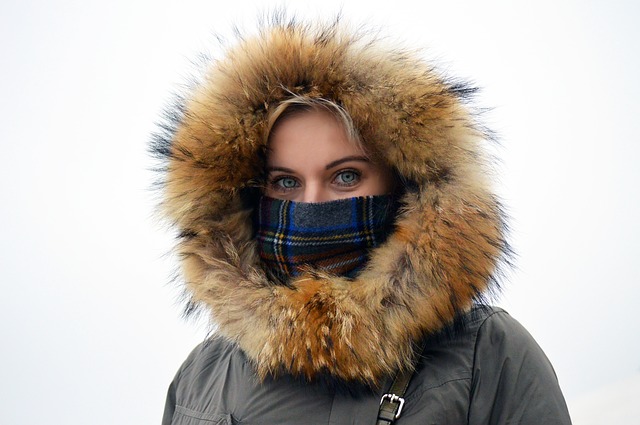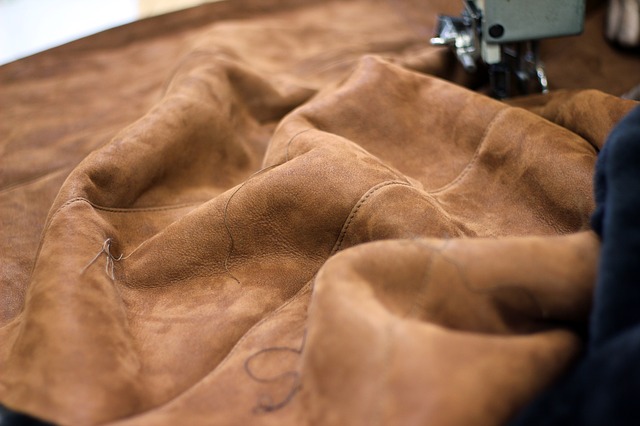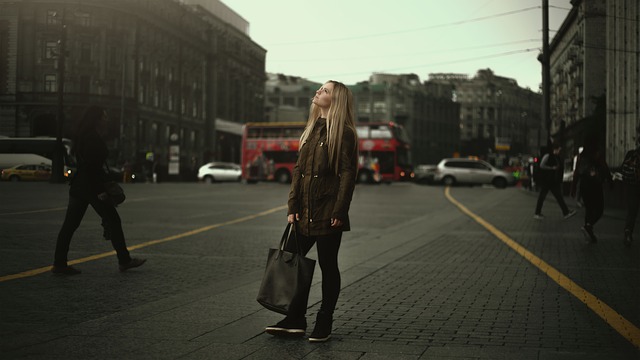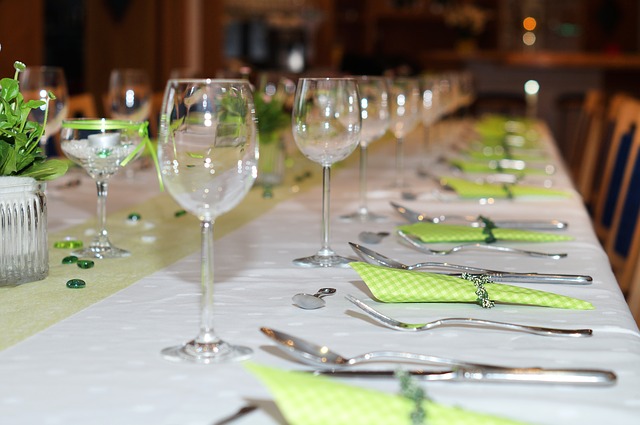Latest News for Jonval Leathers & Furs
Tips for Cleaning Your Leather, Fur & Shearling Coats
January 11, 2017
Leather, fur and shearlings provide a great return on investment when cared for properly. With the appropriate routine care, your valuables can last for decades. Learn how each of these clothing types need to be maintained and the benefits of using Denver leather repair if needed.
Over time, your fur and leather may need some love. Learn more about the types of alterations to keep your leather and fur coats in Denver lasting for decades! When it comes to properly caring for your leather, fur and shearling clothing, Jonval can help. We are your local expert and can repair, re-line and re-dye materials. We can also alter your clothing or remodel it. No matter what you need, we have you covered. Looking for something new? Stop by and see us at 6880 E. Evans Ave. in Denver 10 a.m. to 5:30 p.m. Monday through Friday.
Read More...
Leather
Unless extreme circumstances occur, you only need to wash a leather jacket once per year. Follow the care instructions listed on your clothing. Obviously, within that year, spills or accidents will happen. You can manage those as they happen in a few ways. First, you can invest in a spot cleaner. Purchase this before or with your leather jacket to ensure you have it ready in case of emergency. That isn’t all—water often works well too. For certain spills, you can put warm water mixed with a little bit of a mild dish soap and wipe off the stain. Dap it with a towel until dry. One of the best ways to maintain your leather jacket’s quality is prevention. You can purchase a leather protectant that will preserve and moisturize your jacket. This will keep it from cracking and other issues. Learn a few other ways to keep a leather jacket clean in between using a professional in DIY’s How to Clean a Leather Jacket.Fur
Fur coats only need to be washed once per year. Follow the care instructions listed to maintain it’s beautiful qualities. In most cases, it lists to be cleaned through a professional service. Throughout the year when you aren’t wearing your fur coat, make sure it is stored in a cool, dry ventilated environment. Good air flow is important to maintain quality as heat and humidity can be detrimental and can lead to cracking and other damage. If small amounts of snow or water get on your coat, take a towel and soak it up as soon as possible. Once completely dry, give it a good shake which will help volumize the fur again. If for some reason your coat gets very wet, take it to a professional to restore it.Shearlings
Shearling clothing only needs to be cleaned once per year and follow care instructions before getting started. In many cases, it will need to be dry cleaned. For small spots and stains, you can use a cloth with a small amount of water or purchase a cleaner. Avoid using chemicals as it can ruin the quality. If the inside of your shearling clothing is leather, be sure to use the leather care tips above to preserve that part of the clothing. Also, if your clothing gets wet, allow it to air dry as opposed to putting it into the dryer. For storing the coat, be sure to keep it in a cool and ventilated environment.Over time, your fur and leather may need some love. Learn more about the types of alterations to keep your leather and fur coats in Denver lasting for decades! When it comes to properly caring for your leather, fur and shearling clothing, Jonval can help. We are your local expert and can repair, re-line and re-dye materials. We can also alter your clothing or remodel it. No matter what you need, we have you covered. Looking for something new? Stop by and see us at 6880 E. Evans Ave. in Denver 10 a.m. to 5:30 p.m. Monday through Friday.
The 4 Types of Leather You Will Find at Your Local Leather Store in Denver
January 4, 2017
Are you looking for a new piece of leather clothing to add to your current selection? Or are you new to leather? There are a few different types to consider. When you visit your local leather store in Denver, it is good to learn about the four types of leather there are. This will allow you to find the perfect article to add to your wardrobe and will complement everything else you have.
To learn more about leather read Wise Geek’s, What Are the Different Types of Leather Clothes. When ready to find the perfect piece of leather clothing to become a staple to your closet, stop by Jonval Leathers and Furs! We specialize in leathers, furs, shearlings and other accessories in Denver. Not sure what type of leather to get? Read more about the typical styles of leather jackets in Denver. Next, stop by and see us at 6880 E. Evans Ave in Denver. We are open 10 a.m. to 5:30 p.m. Monday through Saturday. In addition to our showroom, you can also count on us for fur storage and your alteration, repair and cleaning needs. Contact us today to get started!
Read More...
1. Full grain
Full grain leather maintains the most original state of cowhide. Hair and imperfections are not removed and the material is sanded down to create its overall texture. In this original state, this type of leather is extremely durable. Full grain is also known to do a great job at repelling water. Always be cautious though when it comes to water and your leather clothing. If it by chanced gets soaked, you may want to take it to a professional to ensure the quality maintains intact.2. Corrected grain
This type of leather is used when an artificial surface must be added to the leather. Because of this modification, it closely resembles full grain leather. However, it is not as soft. It is very durable though. In fact, depending on the material, it may be even more durable than full grain leather. This type of material helps with some imperfections that could not otherwise be taken care of in a normal full grain process.3. Top grain
This type of leather is one of the top types sold. It is the top layer of cowhide. This process is also known as “splitting,†so the hair and outer layer are removed. From here, it may be sanded to create its overall appearance. This will also take care of any obvious large marks within it and smooth everything out. The great thing about this type of leather is throughout its finishing process, it remains very durable.4. Split grain
When cowhide is extremely thick, it may be split in two. In this case, that’s where split grain comes in. So, the top grain and bottom layers are removed. Additional layers may be split as well hence the name “split grain.†When making this type of leather, this is often how suede is created. This material has a soft texture that is primarily found on furniture.To learn more about leather read Wise Geek’s, What Are the Different Types of Leather Clothes. When ready to find the perfect piece of leather clothing to become a staple to your closet, stop by Jonval Leathers and Furs! We specialize in leathers, furs, shearlings and other accessories in Denver. Not sure what type of leather to get? Read more about the typical styles of leather jackets in Denver. Next, stop by and see us at 6880 E. Evans Ave in Denver. We are open 10 a.m. to 5:30 p.m. Monday through Saturday. In addition to our showroom, you can also count on us for fur storage and your alteration, repair and cleaning needs. Contact us today to get started!
Your Guide to Rocking that Denver Leather Jacket this Winter
December 21, 2016
The leather jacket, an iconic staple in one’s closet. You can mix and match it with a variety of items in your wardrobe. You can purchase a Denver leather jacket and it will last for decades making it a perfect return on investment. Many only consider wearing a jacket during the change of the season in the spring or fall. That shouldn’t be the only time you bring it out! Denver has very chilly summer nights but you can also wear it in the winter too. Try some of these ideas and get the most out of your clothing.
For more tips when it comes to these jackets, read our guide to finding the perfect Denver leather jacket. To find one that you can totally rock this winter, stop by Jonval! We are Denver’s place-to-go for luxury outerwear. From leathers and furs to shearlings and accessories, you can find it all with us. Stop by and see us at 6880 E. Evans Ave. in Denver. We are open Monday through Friday from 10 a.m. to 5:30 p.m.
Read More...
Casual look
During the winter, it is great to accompany a leather jacket with an outfit. One of the best ways you can do this is with a casual “jeans and boots†look. Both men and women can rock this style, with a lot of items you probably already have in your closet. Take your sleek and classic black leather jacket and pair it with light or dark colored jeans. Top the outfit with boots. Perfect for winter, you’ll stay warm. Leather is extremely breathable so it will help you keep warm but it will be manageable to wear all night long. Plus, in the winter the frigid temperatures can be brutal. Your leather jacket will be the perfect extra layer under your coat as you go outside.Unique styles
Leather is a great material to mix up. You can do a lot with this material. You can go beyond the classic casual look and be the person everyone is looking at as a fashion icon at all your winter events. For instance, women can wear a cropped leather jacket with a pair of high rise black jeans, dress or high waist skirt. Whether you are just wearing a solid black or a vibrant color, it will surely grab attention. For men, stand out with a leather jacket that has symmetrical lines and multiple zippers. You can find these different lines in the layout of the jacket, such as the neckline or pocket directions. Ladies, you can also steal the show by using a leather jacket to accent a great pair of heels or boots. Learn about more styles in Why a Leather Jacket and Lace-Up Boots are a Perfect Pair.Weathered
Another great way to rock a leather jacket is by wearing one with character. These might be a little faded to show their age. Some are made this way while others are just aging gracefully. You can really play with this style to achieve the look you are seeking. For instance, men can pair it with a nice button up shirt or t-shirt. Ladies, try it with a turtle neck (warmth!) or bright colored V-neck tee. No matter what goes under the leather jacket, just because it may have a few imperfections, they just become the part of the look. It’s fashion!For more tips when it comes to these jackets, read our guide to finding the perfect Denver leather jacket. To find one that you can totally rock this winter, stop by Jonval! We are Denver’s place-to-go for luxury outerwear. From leathers and furs to shearlings and accessories, you can find it all with us. Stop by and see us at 6880 E. Evans Ave. in Denver. We are open Monday through Friday from 10 a.m. to 5:30 p.m.
​History and Benefits of Shearlings from your Leather Store in Denver
December 14, 2016
Shearlings are clothing materials made of lamb or sheepskin. This popular fashion piece is a luxurious material that has a suede surface on the exterior and soft interior. It goes through a tanning process to get its color. You can buy a variety of shearling materials from jackets to coats. Great for special occasions or everyday wear, this is something you will want to get from your local leather store in Denver.
Read More...
History of the Fashion of Shearlings
The use of sheep skin for clothing dates to the stone age. Throughout the various time periods, this material was more than just clothing. It was a representation of one’s status. It was used for shirts, under garments, hats and more for both men and women. In more modern times, shearling was used in war time for pilot hats. Then it also grew in popularity for fashion. You began to see it in the 1940s and 1950s amongst celebrities, in movies and more. Over time, the use of shearling expanded and became use in shoes and boots, for example Ugg boots. This material is great for those who live in Colorado during the winter as it is warm and fashionable. Read more about the brief history of the shearling jacket in GQ’s fashion blog.Benefits of Shearlings
In addition to being incredibly fashionable, shearling is a very warm material. In some of the coldest of temperatures, a shearling coat does a great job at keeping the person wearing it warm. Why? It is a great insulator allowing you retain heat. However, another advantage of this material is it is flexible. If you go from a cold setting to a warm room, it can adapt so you aren’t burning up. It is also great in between seasons. Shearling can also absorb moisture and is resistant to water. While not completely waterproof, if it gets damp, it usually is not a problem. The water usually rolls right off. You can also feel good with your investment as shearling is durable and will last for a long time.Types of Clothing
When it comes to different types of shearling clothing, there are a wide variety of items you can purchase. Popular items include hats, coats, jackets, purses and footwear. Often, shearling is available in various shades of brown with a white or cream colored interior. You can pair a dark coat with a dress, dark pants of casual wear. You can pair a light-colored jacket is great for casual everyday wear. For shoes, women can enjoy shearling lined boots in the winter tucked into a nice pair of jeans or leggings.Â
When you are looking to find the best in shearlings, Jonval is your place. From leathers and furs to shearlings accessories, you can find the perfect addition to your closet. Be sure to check out our latest fashion update: what’s in store for fur coats in Denver and more. Stop by and see us at 6880 E. Evans Ave. in Denver rom 10 a.m. to 5:30 p.m. Monday through Friday or 10 a.m. to 5:30 p.m. on Saturday. We are closed Sundays. Fill out a contact form or call us at 720-377-1555 to get started.
Denver Leather Pro Tip: What to Wear for New Year's Eve
December 7, 2016
The holiday season is a busy time of year. From shopping and wrapping to baking and gift giving, there is so much to do. There are also many holiday parties to take part in. If you are looking for new fashions and styles to wear to your holiday and New Year’s events, your leather store in Denver can help. From coats to accessories, there is something for everyone to spruce things up to make your outfit the talk of the party!
Read More...
Women’s Fashion
Women can draw the eyes of the party even by the coat they are wearing. For those who prefer traditional styles, try a long dark fur coat. Find a style with a beautiful full trim around the neck and arms. You can find beautiful brown tones or black and greys for a classic look. For something a little bolder, choose a bold color such as red. It can go well with black pants or that “little black dress.†You can also stay warm by wearing a light leather jacket. Another great look for casual party is a great leather vest or light colored slim leather jacket. Stay in the holiday spirit with a great red or white vest, paired with a dark pair of jeans and black or brown boots. For more ideas, read Real Simples’ 5 Easy Holiday Party Outfits.Men’s Fashion
One of the most classic leather jackets that is perfect to invest in before the start of the year is a classic Schott 644. This traditional American jacket has been beloved for decades dating back to WWII. It is made of a smooth black surface with trim arms and linear trimmings. You can also invest in a brown leather jacket rich in character. This is a great addition to a dark pair of jeans and dark shoes. For another warmer option, choose a long black button up leather jacket. This can pair well with a light undershirt and dark pants or jeans and dark shoes that will keep you warm all night long, and help you stay the life of the party. If you’re a sports fan, pick up a leather sports jacket of your favorite team. It will also help make small talk at your parties!Accessories
Finding the perfect accessory is ideal for your holiday parties. For women, you can find a sleek leather wallet or clutch to keep with you all night long. It will be big enough for your essentials and not bulky. If your party is during the day, walk into the party with a great pair of sleek sunglasses. For men, keep your cards and essentials in a slim leather wallet. Keeping it slim will allow it to fit into our back pocket or new leather jacket easily without being obvious. Be sure to stay warm with a pair of black leather gloves.Â
For all your holiday and New Year’s styles, visit Jonval Leather, Furs, Shearlings and Accessories. Be sure to read our guide to finding the perfect Denver leather jacket, then stop by! We have all the styles and fashions to make you the talk of your party. Come by our store at 6880 E. Evans Ave. in Denver from 10 a.m. to 5:30 p.m. Monday through Saturday.




